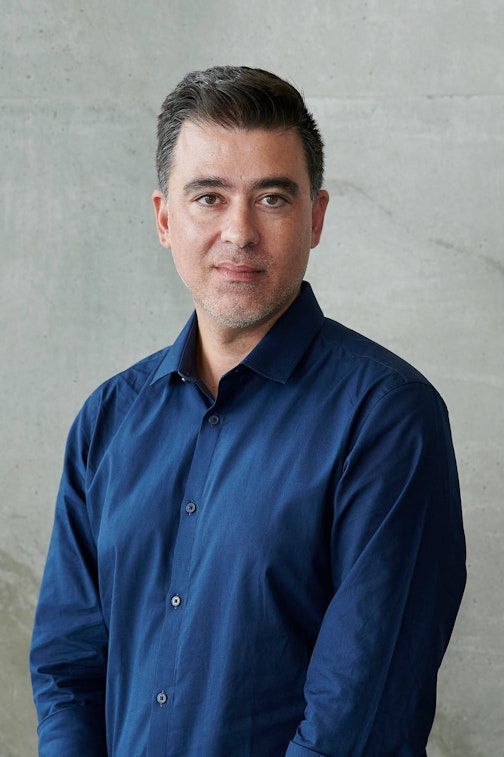Temporary loss of information
Pedro de Almeida
The wheel of death. No, it’s not an inverted Buddhist mantra, but the dreaded icon we’re all accustomed to seeing on our screens. It’s reason for being? A temporary loss of information, caused by a network failure in capturing all those ones and zeroes floating about in the space between us, presents an opportunity to contemplate the nature of connection. Like a Buddhist prayer wheel, it appears, that wheel of death; spinning, almost grinning at its ability to frustrate any expectation that the verb loading may actually self-realise. The slow diminution of hope in being connected is commensurate with each cycle as it the wheel turns—can one ever feel less connected than when wifi drops out?
Well, in brief, yes. We’d be churlish not to admit that connection is always at once more direct and more difficult than this. At its core is a commitment to listen and to witness, nether of which wifi does much to amplify qualitatively, despite its inarguable quantitative mastery. Which is why, while maintaining adherence to the editorial spine around which 4A Papers is conceived—NOW, THEN, MAKE TALK, SEE—Issue 6 offers a preponderance of contributions that record mutually rewarding acts of witness: face-to-face engagement in Jaipur, London and Sydney; insights into histories borne of dialogues between people, institutions and cultures; tours in places as disparate as Queensland and Russia, energised by coffee and conversations with colleagues.
Lleah Amy Smith opens this issue with the story of gallerist Peter Nagy, whose boundless enthusiasm and endearing charisma (even on the page) animates his story from New York to New Delhi, and many points in between. Meeting with him in Jaipur last December as part of her undertaking of 4A’s Emerging Writer’s Program, Lleah takes a reassessment of Nagy’s seminal essay Acts of Delicate Balance as the starting point for asking how contemporary art and society in India reconcile NOW, and how it might in the future, looking at the premise that ‘if everyday life is systematic and controlled, art offers a retreat from that system; if life is chaotic and unruly, art production is ordered and calm.’
Taking us to 1958, Mikala Tai intertwines the personal and the political in her analysis of when ‘two significant exhibitions of contemporary Japanese art were presented in state galleries around Australia that sought to move beyond wartime animosity and develop empathy and understanding within the Australian public towards Japan.’ Tian Zhang provides insight into 4A’s early years of curating Asian-Australian identities by ‘talking and not talking about race,’ taking several exhibitions as case studies for what it was like THEN for former 4A directors Melissa Chiu and Binghui Huangfu as they shaped ‘the fluidity and multiplicity of Asian diasporic subjectivities’.
On a drizzly evening, Eugene Yiu Nam Cheung took the initiative of leading artist Moses Tan on a tour of cruising locales around Sydney’s CBD. ‘We listen as the howl of hand driers melt into the sound of syncopated streams running from taps which never seem to stop, cubicle doors static and bolted shut, toilet bowls flushed at regular intervals’—an experience from which Eugene elucidates the kind of art Moses seeks to MAKE, eulogies for ‘Singapore’s historical attraction to and cultural erasure of queerness,’ emanating of melancholia and desire.
The newly established Asia-Art-Activism, with nice digs at London’s Raven Row, conducts a TALK led by Annie Jael Kwan. A multifaceted conversation with Ada Hao, Trâm Nguyễn, Cường Phạm, Jia Qi Quek, Sau Bin Yap and Howl Yuan, offers a collective drive: ‘I think we, or at least practitioners who are in the expanded field of post-studio practice today, are looking for more substantial participation and the possibility to enact change.’ Meanwhile, Alex Burchmore expertly summarises and analyses the proceedings of a one-day workshop on the ongoing interpretations and implications of Xiao Lu’s legendary ‘Gunshot Event’ in 1989, among other aspects of the artist’s life and work. As Alex observed, among the stellar line-up of art historians, theorists and witnesses to the making of this history, ‘Xiao Lu herself sat among the audience, silent for the most part but a palpable presence nonetheless, a witness to the sincerity and authenticity of her prolific artistic practice.’
In Brisbane, Anabelle Lacroix takes a view of The 9th Asia Pacific Triennial of Contemporary Art by focussing on curatorial affinities in the arrangement of certain works ‘that relate to geographic realities, strong female perspectives, and Islamic ones.’ Her inclusion of a visit to the concurrent Beaut (Brisbane and Elsewhere Art Untriennial) reminds us of the importance of alternatives to institutional propositions, no matter how collaborative and wide-ranging. Rounding out this issue, Susan Acret shares her experience of a tour of Moscow and St Petersburg’s riches in modern and contemporary art, including a stop to SEE the magisterial retrospective of the work of Ilya and Emilia Kabakov. In their work, Susan recognises ‘a manifestation of their psychological longing to escape a dreary, grey existence for an “other” that could be nature, space, or the future.’
There it is, the future. Or, loading …
Best, and less
Pedro de Almeida
Editor, 4A Papers
About the contributor
Pedro de Almeida is a curator, programmer, arts manager, writer and editor based in Sydney, Australia.
